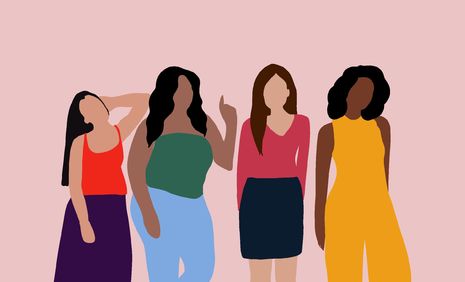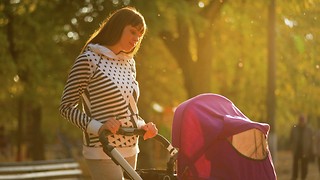We need to internalise intersectional feminism
Maya Mcfarlane argues that, in Cambridge, ‘intersectionality’ is frequently signalled but not internalised

Intersectionality is not just a buzzword. It cannot simply be dropped into a Facebook event description or painted onto a banner, next to a picture of raised fists with different skin tones. It is a tangible, inescapable fact of life for people of marginalised ethnic, class, sexual and gender identities. In light of International Women’s Day, it is about time that so-called ‘feminist’ events in Cambridge came to reflect this.
Falling in the month of March, International Women’s Day follows the end of Black History Month in America. With the sentiment of both of these causes flooding simultaneously into my Twitter feed, I found myself torn between two divergent political energies. At Cambridge, we celebrate International Women’s Day with a host of events including formals, guest speakers and drinks receptions. We celebrate inspirational women and the progress that has been made. However, it can be difficult to leave these events feeling optimistic with the knowledge that such ‘progress’ has not been equally accessible to all.
“Acknowledging the existence and danger of white feminism does not mean one has dismantled it.”
The issue is not that marginalised identities are completely ignored, but that they are recognised just enough so that organisers truly believe they are the antithesis of the white feminist agenda. Acknowledging the existence and danger of white feminism does not mean one has dismantled it: many in Cambridge operate through a lens of performativity, which prevents them from seeing just how superficial their supposedly ‘intersectional’ initiatives really are, often appearing to be an afterthought alongside the ‘main events’.
My college screened Hidden Figures in the week building up to International Women’s Day, a movie about Katherine Johnson, the African American woman at NASA who provided some of the calculations to launch the first American man into space. Whilst this was a great selection and I truly admire Taraji P. Henson, who played the leading role, events like this cannot stand alone. Likewise, there was a temporary over-hall of the paintings in the college hall, replacing the portraits of ‘old white men’ with women associated with the college. I could not see a single one that was black.
I am not in complete opposition to these events taking place and I admire the dedication it takes to bring them to fruition. However, inclusivity and diversity should be greater embedded in feminist organising, rather than being presented in somewhat tokenistic, performative acts. A movie night is great, but what about a panel discussion afterwards about how women of colour are still marginalised in this very institution today? Or an interrogation into why whiteness is still the norm, even on International Women’s Day, in Cambridge? Initiatives that address these issues are usually run by BME organisations, whilst their ‘feminist’ counterparts remain silent. By delegating our narratives to a restricted, more ‘palatable’ format that does not threaten the status quo, important issues are left unaddressed, and this simply cannot continue.
“International Women’s Day often involves the exclusion of trans women and non-binary people.”
Commonly, International Women’s Day sees a celebration of women’s participation in certain fields of employment, particularly STEM. Whilst this is certainly a prominent issue that must be addressed, it is vital that we consider alternative factors alongside gender which may prevent women from accessing higher education and particular occupational fields, including ethnicity and class. For instance, according to a report by AdvanceHE, in the 2016/17 academic year, there were approximately 19,000 university professors in the UK. Only 25 were black women.
Furthermore, it is obvious that International Women’s Day often involves the exclusion of trans women and non-binary people. Trans Exclusionary Radical Feminism is not only absurd but dangerous and abhorrent, requiring widespread condemnation in feminist spaces all year round, not just on a single day in February. A theoretical condemnation of an exclusionary ideology must translate into action, with forums and events specifically devoted to this cause. Similarly, when providing safe spaces, we must not be complicit in excluding transwomen, particularly those who may not have come out or feel uncomfortable attending events that are explicitly ‘female only’ for fear of being questioned upon arrival.
It is not easy to dispose of a white, western feminist lens if you are convinced that you are mindful of intersectional issues. We must all remain open and receptive to the possibility that we may not be presenting certain narratives in the most fruitful and productive manner. Despite our own perception, the way that we practically implement intersectional theory is still not good enough. This is an uncomfortable realisation, but many women face an uncomfortable existence in feminist spaces - these issues are repeatedly denied validity and swept under the rug, all in the name of feminist ‘unity’.
It is sometimes commented that there is no longer a need for International Women’s Day. If so many women are now able to study at a university like Cambridge, then why make such a fuss? But equality cannot be subjected to such quantitative measurement. It is not about how many women are in this institution, but the quality of our existence within this space. It is about how our bodies are moulded by an incessant gaze and are made to feel further and further detached from our autonomy. This gaze is not just male: it is white, it is cis-gender, it is heteronormative, and it cannot possibly be quantified or made into a neat statistic. It is a feeling, and that feeling is valid.
 Features / Should I stay or should I go? Cambridge students and alumni reflect on how their memories stay with them15 December 2025
Features / Should I stay or should I go? Cambridge students and alumni reflect on how their memories stay with them15 December 2025 News / Dons warn PM about Vet School closure16 December 2025
News / Dons warn PM about Vet School closure16 December 2025 News / Cambridge study finds students learn better with notes than AI13 December 2025
News / Cambridge study finds students learn better with notes than AI13 December 2025 News / SU reluctantly registers controversial women’s soc18 December 2025
News / SU reluctantly registers controversial women’s soc18 December 2025 News / News In Brief: Michaelmas marriages, monogamous mammals, and messaging manipulation15 December 2025
News / News In Brief: Michaelmas marriages, monogamous mammals, and messaging manipulation15 December 2025









